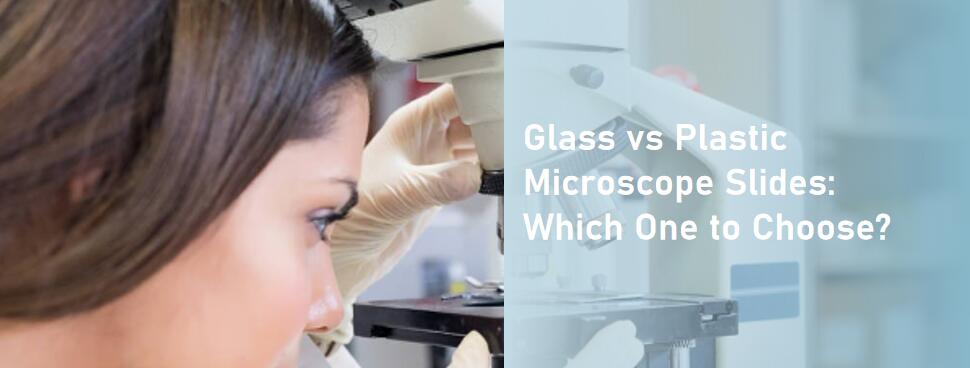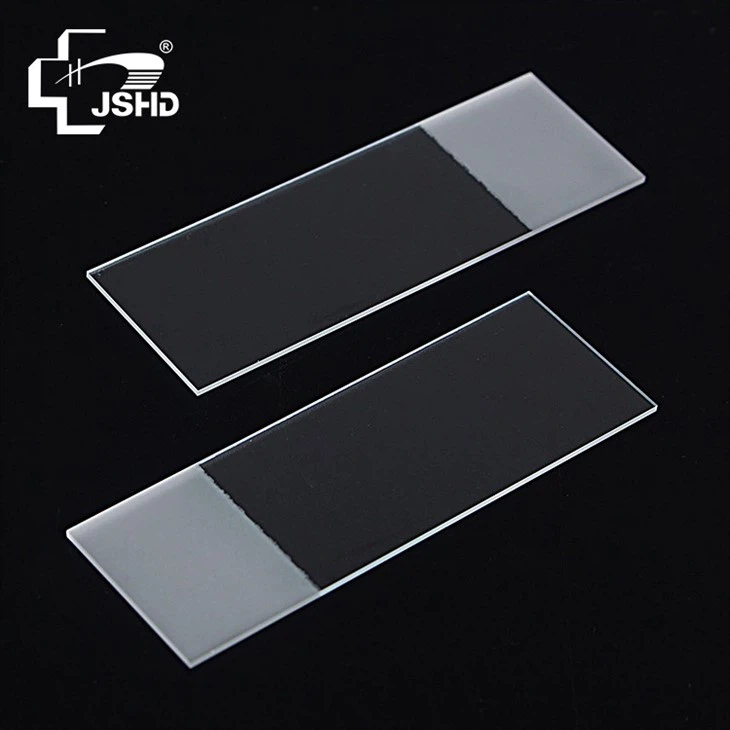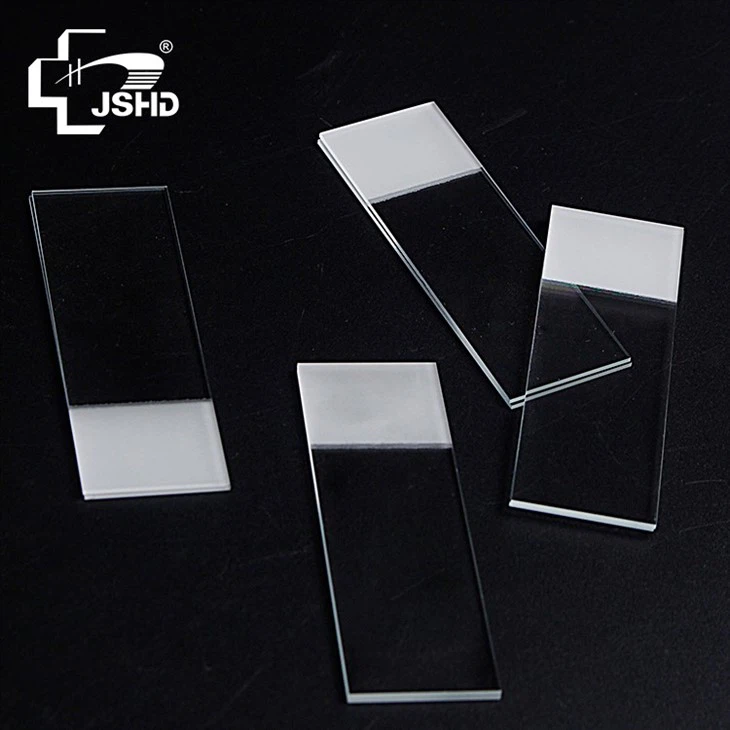
In terms of the world beyond what human eyes can see, the choice of slides might appear as a minor issue. Nonetheless, opting between glass and plastic microscope slides is more critical than one might expect. A decision can influence everything from what you observe to how long your specimens last. Thus, let us explore the great debate: Glass vs Plastic Microscope Slides and find out why this simple choice matters so much.
1.The Great Debate: Glass vs Plastic Microscope Slides
This has been a long-term controversy in scientific circles regarding whether glass or plastic microscopy slides are better than each other. The use of these materials tends to have different benefits and disadvantages that largely impact on your microscopic experiments. Whether you are an undergraduate in a biology lab or a seasoned researcher you must definitely know about the nuances that exist between these two materials for optimum slide preparation and observation.
● Why Choosing the Right Microscope Slide Matters
When picking microscopes slide there is more at stake than just term “liking”. Specifically, what light does when interacting with the specimen depends on its material thereby affecting what is seen through a lens. On top of this, factors like durability, ease of use and environmental friendliness have to be considered while purchasing them. Put simply; having right slide could save or spoil your microscopic examination.
2. What Are Microscope Slides Made Of?
● Glass Microscope Slides : Composition and Characteristics
In general, glass microscope slides are made of soda-lime or borosilicate. Soda-lime glass is the most common type due to its excellent clarity and durability. On the other hand, borosilicate can withstand thermal and chemical shocks relatively well, thus it’s ideal for more demanding laboratory applications. Plastic slides can be easily cleaned because of their smooth surface and reused as many times as necessary, while stiffness ensures that they remain flat during observations.
● Plastic Microscope Slides: Materials and Properties
Such plastic slides are commonly produced from materials like polystyrene or acrylic. These plastics are preferred due to their transparency and ease of fabrication. In contrast with glass ones, plastic slides bend more easily being elastic in nature; this is both an advantage and a disadvantage. The flexibility of these products makes them less prone to breakage but sometimes leads to warping resulting in distorted images on the specimen slides. However, in institutions where safety is paramount together with budget limitations, these drawbacks are negligible.
3.The Pros and Cons of Glass Microscope Slides
● Crystal Clear: The Visual Superiority of Glass
One key reason why professionals prefer using glass slides is its unmatched optical clarity compared to others. This results from the fact that glass has a higher refractive index than plastic thus bending light better enabling sharper pictures which portray finer details. This is particularly vital when working at high magnifications where resolution counts.
● Durability and Longevity: Why Glass Slides Stand the Test of Time
These pieces have great strength and endurance against wear especially once properly handled by users who know how to take care of them over time while reusing them multiple times without any damage whatsoever occurring on them unlike others such as those made from plastic material that may lose quality by warping or degrading hence remaining unstable leading to breakage which may occur during some projects that are meant to be carried out over long periods of time or even for descriptive cases.
● The Fragility Factor: When Glass Slides Break
However, glass is inherently fragile. A dropped slide can split into dangerous shards causing potential harm to the user and contamination of the sample. Given its fragile nature, special handling and storage precautions must be taken making it difficult to use in a busy or high-risk environment.
● Cost Considerations: Are Glass Slides Worth the Investment?
Glass slides are generally more expensive than plastic ones; but their reusability outweighs initial cost. In any laboratory situation where clear-cut observations are required, glass slides are worth every coin spent on them since they deliver expectations and last for a lifetime.
● Environmental Impact: The Eco-Friendliness of Glass Slides
From an environmental perspective, glass is a more sustainable choice. In total contradiction with this aspect, glass slides can be washed sterilized and reused endlessly minimizing waste. Moreover, unlike plastic ones which mainly end up in dumping grounds yet cannot be recycled entirely thus non-biodegradable in nature.

4.The Pros and Cons of Plastic Microscope Slides
● Lightweight and Shatterproof: The Safety of Plastic Slides
As far as safety is concerned, plastics slides have got one unique advantage. They weigh small amounts hence without easily breaking upon accidental dropping like what would happen with those made from glasses found mostly at educational levels were accidents are frequent occurrences among learners. At least no broken glass injuries for young students or for areas where there will be constant coming into contact with the slides.
● Cost-Effective Solutions: Why Plastic Slides Are Budget-Friendly
Comparatively cheap to produce when compared to glasses, plastic slides offer great economies to cash trapped entities like schools with meager budgets. Furthermore, they find applications in single-use systems such as discarded after one observation case due to risk of cross-contamination between these experiments through the slides thus costing much less than any other slide in this situation to protect health of users.
● Chemical Resistance: How Plastic Stands Up to Harsh Substances
Usually, plastic slides are more resistant to chemicals than glass ones, especially when it comes to some harsh reagents that can erode or pit the glass. Thus, in such situations, plastic slides are preferred due to the likelihood of strong chemical exposure.
● Visual Clarity: Do Plastic Slides Measure Up?
Consequently, though there are various practical advantages of utilizing plastic slides, their visual clarity is not the best. Because of its lower refractive index, plastic often produces less sharp images compared with those obtained using glass. In cases where accuracy is paramount, this could pose a major drawback.

5. Which Slide Is Right For You?
● Educational Settings: Glass or Plastic in Classrooms?
In educational settings where safety and expenses matters, classrooms owners mostly prefer using plastic slides. They are safer due to their shatterproof quality and less expensive thus they can be used widely in classroom experiments. However, for talented students or special courses, glass slides might have to be used because they provide clearer vision hence guaranteeing best results.
● Clinical Laboratories: The Professional’s Choice
Glass slides still remain the gold standard in clinical laboratories where accuracy is key. Their durability along with clarity makes them ideal for disease diagnosis and detailed analysis. While some plastic may be used on certain occasions, it is mainly saved for specific applications requiring safety measures or chemical resistance.
● Research Laboratories: Precision in Practice
For researchers working at a high level of detail and accuracy, nothing beats glass slides when it comes to choice. The optical superiority of glass allows even microscopic details to become discernible as would be necessary while studying cellular structures or carrying out complicated procedures.
● Specialized Applications: When You Need Something Extra
There could also arise cases whereby particular types of slides like frosted glass labeling or charged glass adhesion enhancement would be required for specialized purposes. In these instances, the choice between glass or plastic is based on specific demands of the tasks involved.
6.Conclusion
In selecting between glass and plastic microscope slides, one should factor in issues like purpose of use, affordability, as well as environmental effects. Knowing the merits and demerits associated with each material enables you to make rational judgments based on your needs.
Post time:2024-08-14




